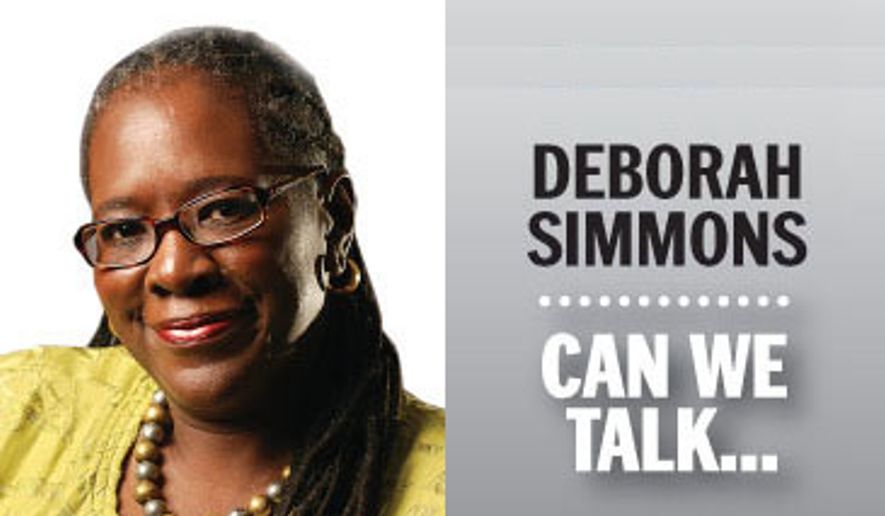ANALYSIS/OPINION:
It’s noontime, and the front porches and sidewalks of the shotgun houses and apartment buildings in the Uniontown area of Anacostia are dotted with people, residents perhaps.
Block after block after block is clogged with loiterers, passers-by and hangers-on. At a laundromat. At bus stops. In front of a health clinic. At corner stores. At a dusty backyard. A vacant lot.
Disabled vehicles dot the streets and lots, too, while the humans appear more broken than the cars and trucks. The signs of the Washington Redskins nation are boastful.
What’s noticeable, as well, are the flashing lights advertising crime and video cameras — warning signs for visitors, reminders for regulars.
Welcome to Ward 8, the poorest political jurisdiction in the nation’s capital. Predominantly black, it is at once home to a high tolerance for violent crimes and misdemeanors, and the prospects for an economic resurgence — a turnaround, if you will, to beat all turnarounds.
SEE ALSO: Virginia, D.C. lawmakers aim to keep Arlington Memorial Bridge open through repairs
Joblessness and blatant signs of poverty have long been visible in Anacostia. A neighborhood hard by the river of the same name, it has not been itself since the 1968 riots that rocked America following the assassination of the Rev. Martin Luther King Jr.
In the decades before King’s killing, underprivileged and middle-class blacks lived alongside underprivileged and middle-class whites and Jews, attended school together at Anacostia High and worshipped together — even though there were black churches, such as the Roman Catholic St. Teresa of Avila. And, of course, they shopped and played together.
The riots, however, cast a pall that Anacostia cannot seem to shake. I know, because Anacostia is where I grew up as a preteen and teenager, and Ward 8 is where I raised my kids until 1990, when two thugs shot a kid behind my house and stole his tennis shoes. (Tennis shoes!)
By the time we moved in 1990, Ward 8 had become a postcard for the crack epidemic and drug wars, human pathologies that are alive and well today. And liquor stores, fast-food joints, fried chicken and Chinese food places, and low-brow apartment living became the norm. Banks offering savings and credit opportunities, and supermarkets offering fresh produce — not so much.
Indeed, government and nonprofits occupy a lot of land in Ward 8, perhaps too much. The United Planning Organization, D.C. agencies, feeding programs, not-for-profit groups are all burrowed in the ward, which reaches from military and federal parkland to the Prince George’s County border. Safeway, which was located, ironically, on MLK Jr. Avenue SE, shut its doors in 1998, the year most members of the D.C. Council were more interested in running for office than about whether Ward 8 residents could feed their kids fresh fruit, hot grits and a glass of milk.
While a Giant supermarket plopped into the food desert, much hope is penned to the Skyland Shopping Center in Southeast, where a Safeway and other retail opportunities are supposed to offer a deep infusion for employment opportunities.
SEE ALSO: Outbox, pop-up work space in Silver Spring, provides an alternative to cubicles
“Skyland is a catalytic project because it checks all of the boxes for creating pathways to the middle class — job creation, affordable housing and much-needed community-focused retail. We are excited to move forward on this long-awaited project,” Joaquin McPeek, spokesman for the Office of the Deputy Mayor for Planning and Economic Development, said last fall.
Although the anticipated Skyland development is not technically in Anacostia or Ward 8, it’s close enough. I’m nonetheless taking a wait-and-see attitude, just as I did as a youngster growing up in Anacostia, when neighborhood kids would call Frederick Douglass’ historic home, Cedar Hill, the “ghost house” and we’d ride our Flexible Flyers in heavy snowfalls. We also would sneak there to watch fireworks and loll around in summertime. (I always hoped the National Park Service would tend to the Douglass home the way it was supposed to, and it is.)
As for those noontime gadabouts in Anacostia, there’s no succinct plan from the government. For sure, neglect and human foibles led to the economic downturn and poverty that kept apace post-MLK. I hadn’t ridden around Ward 8 up close since Marion Barry, who represented Ward 8, drove me around in his Jaguar in 2013 and 2014. The former mayor made a point of taking me to various economic pockets in the ward and spent considerable showing me recreation facilities and what he thought needed to break the cycles of poverty and dispel the so-called broken-window theory.
At Fort Stanton Park on Monday, a handful of kids in neon-yellow life vests appeared to taking swimming lessons, something Barry supported before he died. Other than rec and pool staff, the only other adults outdoors were playing pickup basketball.
That the kids are taken care of now that school is out is a good sign. The grown folk, or old heads as they are sometimes called, are of concern, though.
P.S.: I’ve put in a request to interview a young politician in Ward 8 named Trayon White. He won the Democratic primary last week, and I’m curious to see what the next generation pol has on his mind for the adults in Anacostia and other D.C. neighborhoods. I’ll clue you in if I get the interview. If my interview request is declined, I’ll let you know that, too.
• Deborah Simmons can be reached at dsimmons@washingtontimes.com.
• Deborah Simmons can be reached at dsimmons@washingtontimes.com.




Please read our comment policy before commenting.